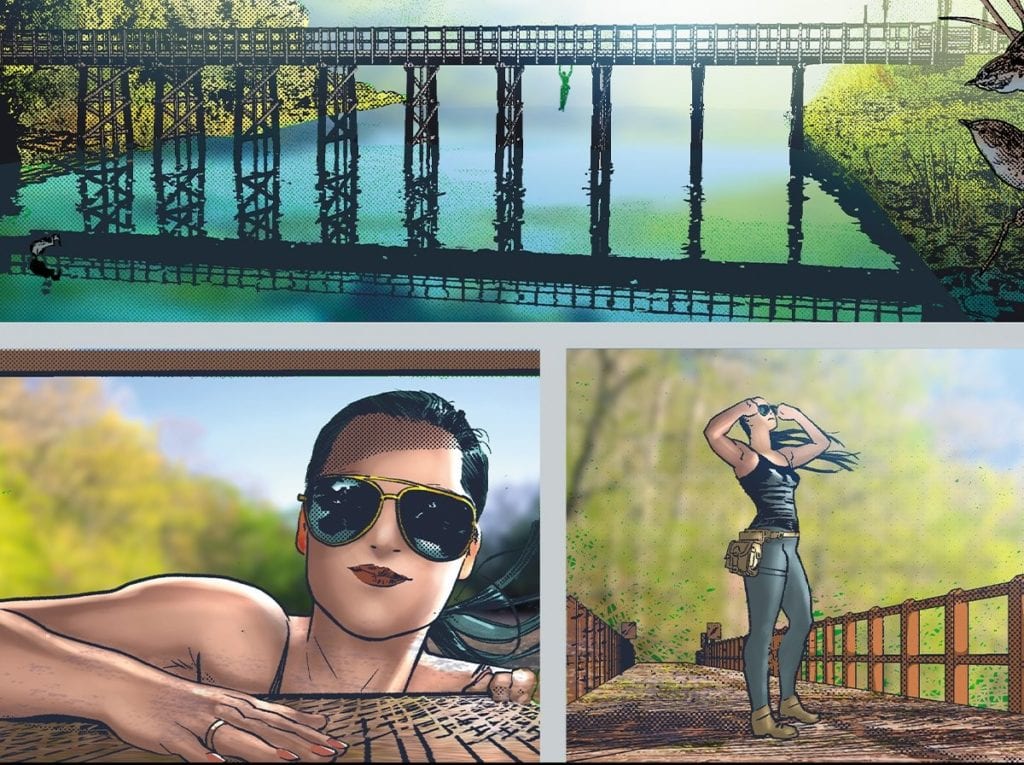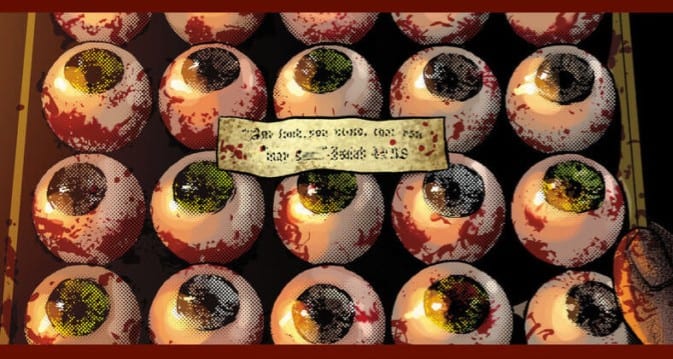On June 10th, AWA Studios will release the second issue of Archangel 8. It continues the story of Raziel, an angel on a mission, who must infiltrate a violent drug cartel and avoid the attention of others like himself.
It is relentless in its storytelling and barely gives the reader a moment to breath between action sequences. Even in those moments it does allow, they are filled with the effects of the violence portrayed elsewhere. Archangel 8 comes with a mature readers warning for a reason but it’s not just for the gory element. There are depths to this story. Layers to be stripped back and considered by the reader. AWA want to entertain but they also want their readers to think.

Narrative Punches
Despite the cover wearing it’s angelic wings with pride, very little of the actual comic makes reference to this supernatural element. Instead Michael Moreci focuses on portraying the violence inherent in the drug cartel that forms the main focus of this issue. Whether it’s directly from the criminal activity or the effects of their actions, each scene is soaked in spilt blood.
The opening sets the scene and illustrates the self importance of the cartel’s leader. Moreci has Delmar make a speech about Empire’s and perceived strength, linking the organisation to concepts of conquest and struggle. When in reality Delmar is a violent bully and a thug. Moreci wants the reader to see this contradiction in the villain because it plays a part later in the narrative when Raziel, or Archangel 8, is faced with a similar contradiction in his own way of life.
Moreci packs this issue with moral dilemmas and characters who act out of enforced instinct. Their actions are not really their own but a culmination of years of fear and repetition. The drug runners go through the motions as they have been trained without giving it a second thought. This is reflection on religious teaching and again is brought up later in the issue in regards to Raziel.
This issue’s main aim is to portray the violence that surrounds Raziel and force the reader to question the Archangel’s work. The reader is shown the actions and consequences of the world in which Raziel moves and lives. It is a constant deluge of horror with no respite for the characters or the audience.

Realist Images
The art by C.P. Smith is gritty and realistic, as is the coloring by Snakebite Cortez. The overall look of the comic is cast in shadows with very little exaggeration. This is unusual for a vigilante comic as you would expect some of it, especially the violence, to be over the top and bordering on cartoonish. However, Smith’s work recalls the MAX Imprint Punisher series written by Garth Ennis and illustrated by Laurence Campbell. The attention to detail in each panel and the focus on realistic interpretation add an extra level of discomfort to the scenes.
There are occasions where this realism falls away and Smith introduces an abstract image. The panel transitions or narrative help to explain the seemingly out of place image but the reader has to pay attention. To help the reading along, Smith employs simple page layouts with the image focal points central to the panels. The storytelling is easily accessible and generates a pace that keeps the reader turning the page.
Sal Cipriano’s lettering follows Smith’s structure allowing the reader to easily follow the speech through the panels. There is some manipulation of the text, with italic bold used on certain words, however, the majority of the character’s voice comes from the script and not it’s presentation. The only element of the lettering that doesn’t fit the style of the artwork as well is the sound effects. The stark white bubbled lettering is a fixture of superhero comics but with the adherence to realistic images in Archangel 8, the two styles don’t blend. The playfulness of the sound effects seem out of place with the brutal actions being displayed.

Conclusion
AWA’s mature readers comic Archangel 8 fuses drug cartels with Angelic mythology to create a violent comment on society and religion. Less than subtle in most places, the comic draws on a history of excessive vigilantes, such as The Punisher, to produce the appearance of a comic typical to this genre. Underneath the blood and guts, however, is a deeper cut at religion . Moreci has his characters question the ineffability of God and His Word sin the hope that the readers will follow suit.
By itself this issue of Archangel 8 does not make any groundbreaking statements. The majority of the issue contains a lot of macho posturing and excessive violence that ultimately does nothing to enhance the experience. There is an element of shock for shock’s sake and is reminiscent of the Baseball Bat Meeting in the movie The Untouchables. Cliches that have existed in vigilante comics for decades are replayed here in this comic.
Where Archangel 8 exceeds other comics of this nature is in the longer story, the world building that Moreci is doing issue to issue. He is merging existential questions with societal dilemmas to elevate the conversation above the standard ‘right or wrong’ discussion that usually surrounds vigilantes. This is Lucifer crossed with Batman, Preacher merged with The Punisher, Good Omens made by Robert Rodriguez. Archangel 8 is an adult action story with a conscience and a point to make.

